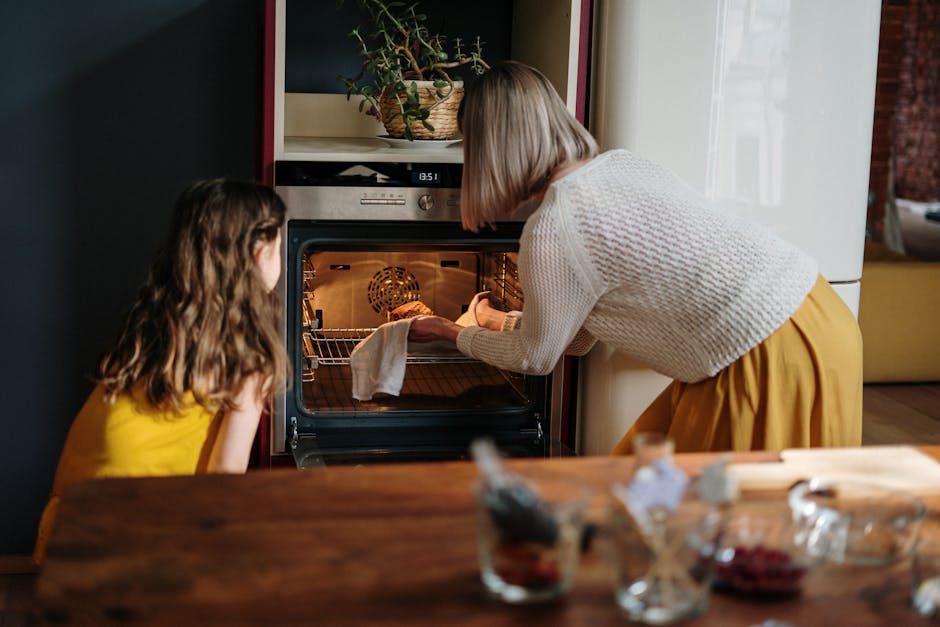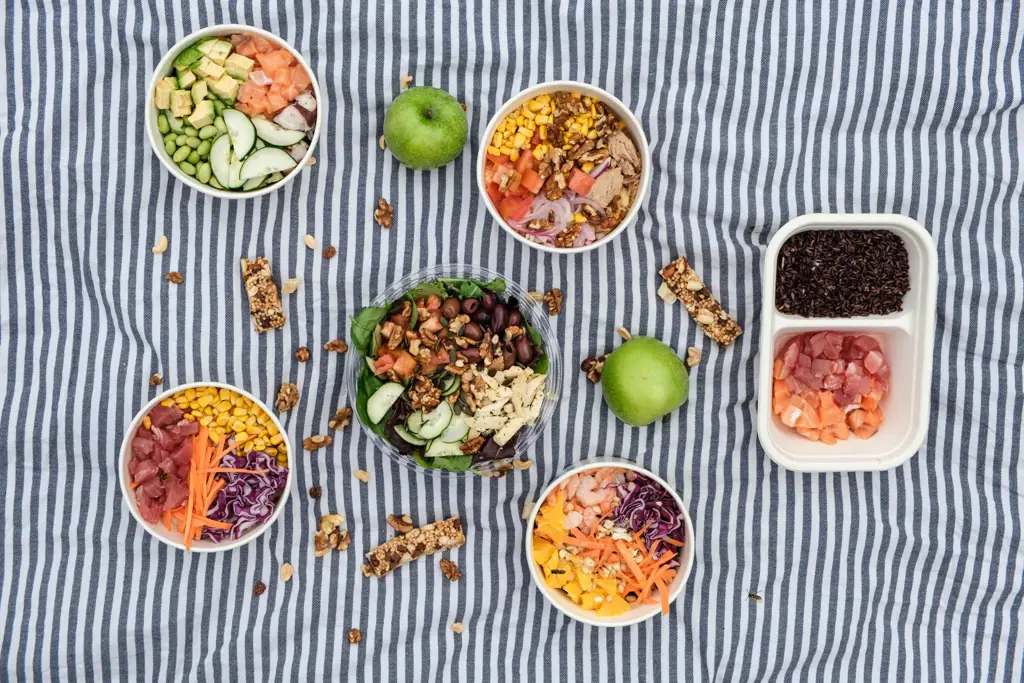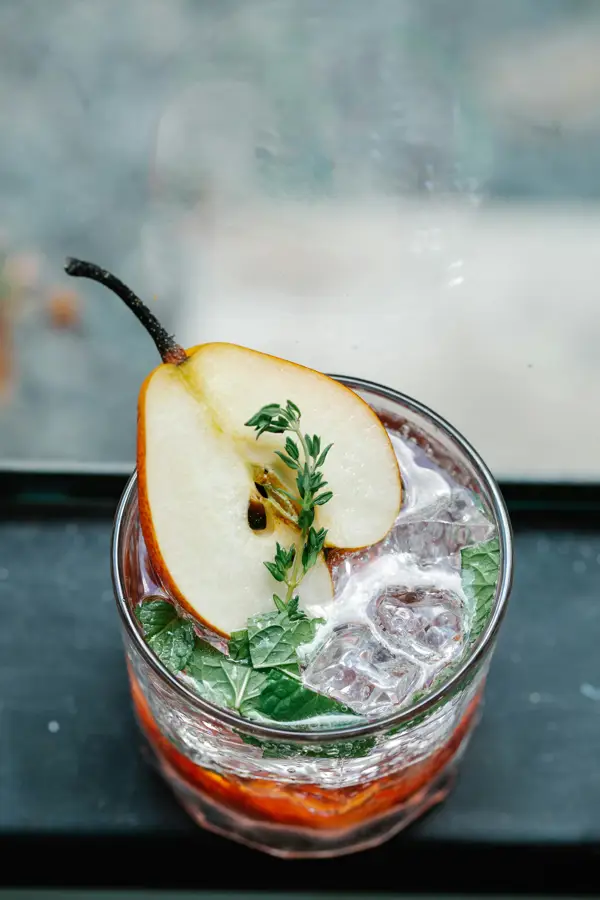Prepare to embark on a culinary journey to the Amazon rainforest, where we uncover the secrets behind one of the world’s most celebrated superfoods: the açai bowl. This vibrant, nutrient-packed dish isn’t just a trendy breakfast; it’s a testament to the rich culinary heritage of the Amazon basin, specifically from the indigenous populations of Brazil. For centuries, the açai berry (Euterpe oleracea), a small, dark purple fruit, has been a staple food source, providing vital energy and nutrients to the communities that call the Amazon home. Its significance goes beyond mere sustenance; the açai berry holds deep cultural and spiritual meaning within these communities, often featuring in traditional ceremonies and celebrations.
The açai berry’s journey from the Amazon to global popularity is a fascinating one. While its use has been integral to Amazonian culture for generations, its wider recognition began relatively recently. The fruit’s nutritional profile, packed with antioxidants, fiber, healthy fats, and various vitamins and minerals, quickly caught the attention of health-conscious individuals worldwide. In fact, studies show açai berries contain significantly higher levels of antioxidants than many other commonly consumed fruits, making its inclusion in a healthy diet highly desirable. This surge in popularity has significantly impacted the Amazonian economy, providing livelihoods for countless farmers and contributing to the preservation of the rainforest ecosystem. However, sustainable harvesting practices remain crucial to ensure the long-term viability of this valuable resource.
The açai bowl itself, as we know it today, is a relatively modern interpretation of traditional Amazonian consumption methods. While the berry was historically consumed whole or in the form of pulp, the visually stunning and customizable bowl – typically featuring blended açai as a base, topped with an array of fresh fruits, granola, nuts, and seeds – is a relatively recent culinary innovation, largely popularized in the United States and beyond. Its global appeal lies in its versatility and adaptability. The base recipe can be tailored to individual preferences and dietary needs, creating endless variations that satisfy both taste buds and health goals. The açai bowl’s popularity continues to climb, with global sales projected to reach significant figures in the coming years, further highlighting its status as a superfood phenomenon.
This recipe aims to capture the essence of the açai bowl experience, offering a delicious and authentic taste of the Amazon. We’ll guide you through creating a perfect base, discuss the best toppings to enhance its flavor and nutritional value, and provide tips for achieving the ideal consistency and texture. Get ready to experience the vibrant taste and incredible benefits of this remarkable superfood, and discover why the açai bowl has become a global breakfast sensation.
Ingredients and Measurements
This recipe yields two generous acai bowls. Adjust quantities proportionally for more or fewer servings. The beauty of acai bowls lies in their customizability, so feel free to experiment with your favorite toppings!
Acai Base:
The foundation of any great acai bowl is, of course, the acai! We recommend using high-quality, unsweetened frozen acai puree packets. These are readily available in most health food stores and online. Avoid acai packets with added sugars or artificial ingredients. Using frozen acai is crucial for achieving the right creamy texture without the need for excessive liquid.
- 2 (3-ounce) packets unsweetened frozen acai puree
- 1/2 cup frozen mango chunks (or other frozen fruit like pineapple or strawberries for variation)
- 1/4 cup frozen banana slices (adds creaminess and sweetness)
- 2-4 tablespoons liquid (see notes below)
Liquid Considerations:
The amount of liquid you need will depend on the specific brand of acai and the consistency you prefer. Start with 2 tablespoons of liquid and add more as needed. Too much liquid will result in a watery bowl, while too little will make it difficult to blend.
- Best Options: Unsweetened almond milk, coconut milk (full-fat for extra richness), or even a splash of orange juice for a tropical twist.
- Avoid: Water, as it can dilute the flavor and make the bowl less creamy.
Toppings (Choose your favorites!):
The toppings are where you can truly personalize your acai bowl. Here are some suggestions with quantity recommendations per bowl:
- Fresh Fruit: 1/2 cup – Berries (strawberries, blueberries, raspberries), sliced bananas, kiwi, mango, or peaches. Choose seasonal fruits for optimal flavor and cost-effectiveness.
- Granola: 1/4 cup – Opt for a low-sugar granola to avoid overpowering the acai’s subtle flavor. Homemade granola is also a fantastic option, allowing for complete control over ingredients.
- Nuts & Seeds: 1-2 tablespoons – Sliced almonds, chopped walnuts, chia seeds, hemp seeds, or pumpkin seeds add healthy fats and crunch. Be mindful of nut allergies when serving to others.
- Nut Butter: 1-2 tablespoons – Almond butter, peanut butter, or cashew butter add richness and creaminess. Use natural nut butters without added sugar or oil.
- Coconut Flakes: 1 tablespoon – Unsweetened shredded coconut adds a tropical touch and texture.
- Chocolate Chips (Optional): 1 tablespoon – Dark chocolate chips (70% cacao or higher) add a delicious touch of sweetness.
- Honey or Maple Syrup (Optional): A drizzle to taste – Add only if needed, as the fruit and banana should provide sufficient sweetness. Use sparingly to maintain a healthy balance.
Equipment: A high-powered blender is recommended for achieving a smooth and creamy acai base. A smaller blender may struggle with the frozen ingredients.
Equipment List
Creating the perfect acai bowl requires the right tools to ensure smooth blending, efficient preparation, and beautiful presentation. This equipment list details everything you’ll need, from essential appliances to helpful accessories. While some items might seem optional, they significantly enhance the overall experience and final product.
High-Powered Blender: This is arguably the most crucial piece of equipment. A high-powered blender, such as a Vitamix or Blendtec, is essential for achieving a perfectly smooth and creamy acai base. Lower-powered blenders may struggle to properly break down the frozen acai pulp, resulting in a gritty texture. Look for a blender with at least 1.5 horsepower (HP) for optimal results. A smaller blender (around 48 ounces capacity) will suffice for making a smaller batch, while a larger capacity (64 ounces or more) is recommended if you frequently make acai bowls for multiple people.
Measuring Cups and Spoons: Accurate measurements are key to achieving consistent results. Invest in a set of standard measuring cups (1 cup, ½ cup, ⅓ cup, ¼ cup) and measuring spoons (1 tablespoon, 1 teaspoon, ½ teaspoon, ¼ teaspoon). Using accurate measuring tools will ensure your acai bowl tastes exactly as intended. Avoid using household spoons or cups as these can lead to inaccurate measurements.
Mixing Bowls: You’ll need at least two mixing bowls, one for preparing the acai base and another for combining your toppings. A medium-sized (approximately 8-10 inch diameter) bowl is ideal for the acai base, while a larger bowl (12-14 inch diameter) is useful for holding and arranging your toppings. Stainless steel or glass bowls are preferred as they are easy to clean and won’t react with the ingredients.
Spatula or Scraper: A sturdy spatula or rubber scraper is essential for scraping down the sides of your blender to ensure all ingredients are thoroughly blended. A flexible spatula is also helpful for transferring the acai base to your serving bowl and for spreading the mixture evenly. Choose a spatula with a heat-resistant construction if you plan on using it for warming ingredients.
Serving Bowls: Choose bowls that are wide and shallow to provide ample space for showcasing your beautiful acai bowl creations. The size will depend on the serving size – individual bowls (around 6-8 inches in diameter) are perfect for single servings, while larger bowls can accommodate larger quantities. Consider bowls made from materials that are both aesthetically pleasing and durable.
Optional Equipment: While not strictly necessary, these items can elevate your acai bowl experience: A food processor for quickly chopping nuts or other toppings; a small knife for precise cutting of fruits; a citrus juicer for extracting fresh juice; various sized spoons for serving the toppings; and a nice set of bowls for a visually appealing presentation.
Cleaning Supplies: Finally, don’t forget your cleaning supplies! Having a sponge, dish soap, and a dish towel readily available will make the cleanup process quick and easy after creating your delicious acai bowl. Cleaning your blender immediately after use is especially important to avoid staining and ensure its longevity.
Acai Base Preparation
The acai base is the foundation of your perfect acai bowl, and getting it right is crucial for both texture and taste. This section will guide you through creating a smooth, creamy, and delicious acai base that’s perfect for topping with your favorite fruits, nuts, and seeds.
Choosing your Acai: The quality of your acai significantly impacts the final product. Opt for frozen acai puree packs, rather than whole acai berries, as they are far easier to blend into a smooth consistency. Look for packs that are 100% acai with no added sugars or fillers. The darker the acai, the more potent the antioxidants and the richer the flavor will be. Avoid acai packets with excessive added sugars or preservatives.
Ingredients for the Acai Base (serves 1-2):
- 1 (3-ounce) package frozen acai puree
- 1/2 cup frozen banana slices (or other frozen fruit like mango or pineapple for a sweeter, less intense flavor)
- 1/4 cup liquid (this is crucial for achieving the right consistency). Options include:
- Water: For a lighter, slightly icier base.
- Milk (dairy or non-dairy): For a creamier, richer base. Almond milk or coconut milk are popular choices.
- Fruit Juice (e.g., mango or pineapple): For extra sweetness and flavor.
Equipment: You’ll need a high-powered blender for this recipe. A standard blender may struggle to achieve the desired smooth consistency with frozen ingredients.
Instructions:
- Add the Ingredients: Place the frozen acai puree, frozen banana slices, and your chosen liquid into your blender.
- Blend: Start on a low speed, gradually increasing to high. Blend for 1-2 minutes, or until the mixture is completely smooth and creamy. Scrape down the sides of the blender as needed to ensure everything is fully incorporated.
- Adjust Consistency: If the mixture is too thick, add a tablespoon or two of your chosen liquid at a time until you reach your desired consistency. If it’s too thin, add a few more frozen banana slices and blend again. The ideal consistency should be thick enough to hold its shape but still pourable.
- Taste and Adjust: Taste the acai base and adjust the sweetness if needed. You can add a touch of honey, maple syrup, or agave nectar, but remember that many fruits will already add natural sweetness.
- Serve Immediately: The acai base is best enjoyed immediately after blending. If you need to prepare it ahead of time, store it in an airtight container in the freezer and allow it to thaw slightly before serving.
Professional Recommendations: Experiment with different liquid bases to find your favorite. Adding a squeeze of lime or lemon juice can also enhance the flavor profile. For a truly decadent acai bowl, consider adding a tablespoon of nut butter (peanut butter, almond butter) to the base for extra creaminess and richness. Remember to always prioritize high-quality ingredients for the best possible taste and nutritional value.
Topping Preparations (e.g., fruit chopping, granola making)
The beauty of an acai bowl lies in its customizable toppings. This section details how to prepare some popular and delicious options, ensuring your bowl is both visually stunning and bursting with flavor.
Fruit Chopping: A Guide to Perfection
Fresh fruit is a must-have for any acai bowl. We recommend a variety of textures and colors for optimal appeal. For this recipe, let’s prepare the following: 1 cup of strawberries, ½ cup of blueberries, ½ cup of raspberries, and ½ a mango. Begin by washing all fruits thoroughly under cold running water. For the strawberries, remove the green tops and slice them into quarters or halves, depending on their size. Smaller berries like blueberries and raspberries require no further preparation beyond a gentle rinse. For the mango, peel it using a vegetable peeler, then slice off the flesh from the pit. Dice the mango into small, bite-sized pieces. Remember to handle all fruit gently to avoid bruising. Once chopped, place the fruit in separate bowls to prevent discoloration and maintain freshness.
Homemade Granola: A Crunchy Delight
Homemade granola adds a delightful crunch and wholesome goodness to your acai bowl. This recipe yields approximately 2 cups of granola, more than enough for multiple bowls. You will need: 2 cups rolled oats, ½ cup chopped nuts (almonds, pecans, or walnuts – your choice!), ¼ cup shredded coconut, 2 tablespoons chia seeds, 2 tablespoons maple syrup, 2 tablespoons coconut oil (melted), 1 teaspoon cinnamon. Preheat your oven to 300°F (150°C). In a large bowl, combine the oats, nuts, coconut, and chia seeds. In a separate small bowl, whisk together the melted coconut oil, maple syrup, and cinnamon. Pour the wet ingredients over the dry ingredients and mix thoroughly until everything is evenly coated. Ensure the oats are well-coated for even baking and optimal crunch. Spread the mixture evenly on a baking sheet lined with parchment paper. Bake for 20-25 minutes, stirring halfway through, until golden brown and fragrant. Let it cool completely before storing in an airtight container. This homemade granola will add a fantastic textural contrast to your smooth acai base.
Other Topping Ideas and Preparation Tips
Beyond fruit and granola, consider adding other exciting toppings like: seeds (sunflower, pumpkin, hemp) for extra nutrients and texture; nut butters (almond, peanut, cashew) for creamy richness and healthy fats; coconut flakes for a tropical touch; and a drizzle of honey or agave for extra sweetness. Remember to prepare these toppings ahead of time for easy assembly of your acai bowl. For example, if using nut butter, ensure it’s at room temperature for easy spreading. If using honey or agave, have it ready in a small squeeze bottle for precise drizzling. Proper preparation of your toppings is key to creating a truly exceptional acai bowl experience.
Storage Recommendations: Store chopped fruit in an airtight container in the refrigerator for up to 2 days. Store homemade granola in an airtight container at room temperature for up to 2 weeks.
Bowl Assembly: Building Your Perfect Acai Bowl
Now for the fun part – assembling your acai bowl! This is where you get to unleash your creativity and personalize your masterpiece. While the base is crucial, the toppings are what truly elevate this healthy treat. Remember, the beauty of an acai bowl lies in its vibrant colors and textures.
Start with the Acai Base: Begin by gently scooping your frozen acai puree into a bowl. Aim for approximately ½ cup to ¾ cup of puree per bowl, depending on your desired bowl size and thickness. If your acai is particularly thick, you might need to add a tablespoon or two of liquid – either water, plant-based milk (almond, coconut, or oat milk work well), or even a little juice (like mango or pineapple) to achieve a smooth, spreadable consistency. I recommend using a food processor or high-powered blender to ensure a perfectly smooth base. Avoid over-processing, as this can lead to a watery consistency.
Layering for Visual Appeal and Texture: Once you’ve established your acai base, consider layering your toppings for maximum visual impact and a delightful textural experience. A good rule of thumb is to start with the thicker, denser toppings and then progress to lighter, more delicate ones. For example, you might layer granola or nuts first, followed by fresh fruit, and then finishing with a drizzle of your chosen liquid topping.
Granola and Nuts: A generous sprinkle of granola (about ¼ cup) provides a satisfying crunch. Choose a granola that complements your other toppings. Similarly, a handful of chopped nuts (almonds, walnuts, pecans – about 2 tablespoons) adds healthy fats and a delightful texture. Toasted nuts offer a richer flavor.
Fresh Fruit: This is where you can truly get creative! The options are endless, but some popular choices include sliced bananas (about ½ a banana), berries (strawberries, blueberries, raspberries – about ½ cup total), mango chunks (about ¼ cup), or kiwi slices. Choose fruits that are in season for optimal flavor and freshness. Consider the color contrast when selecting your fruits to make your bowl visually appealing.
Liquid Toppings: A drizzle of something sweet and tangy finishes the bowl beautifully. Options include honey (about 1 tablespoon), maple syrup (about 1 tablespoon), nut butter (almond, peanut, or cashew – about 1 tablespoon), or a squeeze of fresh lime juice. Be mindful of added sugars and adjust the amount according to your preference.
Optional Extras: To further enhance your acai bowl, consider adding other extras such as shredded coconut, chia seeds, cacao nibs, bee pollen, or even a sprinkle of cinnamon. These additions provide extra flavor, texture, and nutritional benefits. Remember, moderation is key. Don’t overcrowd your bowl with too many toppings.
Presentation Matters: Finally, take a moment to arrange your toppings artfully. A well-presented acai bowl is as much a feast for the eyes as it is for the palate. Use a spoon or spatula to create swirls and patterns in your acai base and arrange your toppings in a visually appealing manner. A beautifully presented bowl will enhance your overall enjoyment.
Serving Suggestions
Once you’ve crafted your perfect acai bowl using this Best Acai Bowl Recipe, the fun really begins – presenting it beautifully and enjoying its incredible flavors! There are countless ways to elevate your acai bowl experience, catering to different tastes and preferences. Below are some serving suggestions to inspire your culinary creativity.
The Classic Presentation: Start with a generous 1 cup serving of your blended acai base in a wide, shallow bowl. This allows for optimal topping visibility and easy eating. Ensure the bowl is chilled before adding the acai to prevent premature melting. Aim for a consistent thickness; if it’s too thin, add a touch more frozen banana to thicken it.
Granola Powerhouse: A crucial element of any great acai bowl is the granola. We recommend a generous 1/4 cup to 1/3 cup, depending on your preference. Choose a granola with a variety of textures and flavors, such as nuts, seeds, and dried fruits, to add satisfying crunch and sweetness. Avoid overly sugary granolas; the natural sweetness of the acai and fruits should be the star.
Fruit Fiesta: Fresh fruit is key to a vibrant and delicious acai bowl. Aim for a colorful mix of textures and tastes. Consider 1/2 cup of berries (strawberries, blueberries, raspberries), sliced bananas (about 1/2 a medium banana), and a few mango chunks (approximately 1/4 cup). Don’t be afraid to experiment with seasonal fruits like kiwi, peaches, or pineapple for a unique twist. Smaller fruits like berries are best added towards the end to avoid them sinking into the acai base.
Nutty Delights: Toasted nuts and seeds add delightful crunch and healthy fats. A tablespoon of chopped almonds, walnuts, or pecans, along with a teaspoon of chia seeds or hemp seeds, is a perfect addition. Toasting the nuts beforehand enhances their flavor and gives them a satisfying crispy texture. Remember to chop them to a manageable size for easy eating.
Sweet & Savory Touches: For those who crave a bit more adventure, consider adding a drizzle of honey or maple syrup (1-2 teaspoons, depending on sweetness preference). A sprinkle of shredded coconut (1-2 tablespoons) adds tropical flair and texture. For a unique twist, consider a sprinkle of cacao nibs for a bitter-sweet contrast or a drizzle of nut butter (1-2 tablespoons) for added creaminess and protein. Always add these finishing touches just before serving to maintain the bowl’s visual appeal and prevent the toppings from becoming soggy.
Presentation Matters: Arrange your toppings artfully to create a visually stunning bowl. Consider layering the granola, then arranging the fruit in a visually appealing pattern. Use a spoon or small spatula to create swirls in the acai base for a more artistic touch. Garnish with a fresh mint sprig for an added touch of elegance.
Serving Temperature: Serve immediately for the best experience. Acai bowls are best enjoyed when the acai is still slightly frozen, offering a refreshing contrast to the fresh fruit and crunchy toppings. If you prepare the acai base ahead of time, keep it frozen until ready to use.
Recommendations for the Best Acai Bowl Recipe
This acai bowl recipe is designed for optimal flavor and nutritional value. To ensure the best experience, we recommend following these guidelines:
Serving Suggestions: For a truly delightful experience, we recommend serving your acai bowl immediately after preparation. The fresh ingredients will provide the most vibrant flavors and textures. Consider using a chilled bowl to prevent the acai from melting too quickly. Experiment with different toppings to customize your bowl to your preferences. A little drizzle of honey or maple syrup can add sweetness, while a sprinkle of chia seeds or granola will provide added crunch and fiber. You can also add a dollop of coconut cream or yogurt for extra creaminess.
Storage Conditions: While it’s best enjoyed fresh, any leftover acai base can be stored in an airtight container in the freezer for up to 3 months. Do not refreeze the acai bowl after it has thawed. Toppings should be added just before serving, as they may lose their freshness if stored with the acai base. Remember to label your container with the date to ensure freshness.
Complementary Dishes: Acai bowls are incredibly versatile and can be paired with a variety of complementary dishes. For a light and refreshing breakfast or brunch, consider serving your acai bowl alongside a side of fresh fruit salad or a small portion of whole-wheat toast. For a more substantial meal, you can pair it with a light protein source such as scrambled eggs or a small side salad. The smooth, fruity nature of the acai bowl provides a delicious contrast to savory dishes as well. A smoothie or a light yogurt parfait makes for a great accompanying healthy treat.
Nutritional Information (per serving, approximate): The nutritional content of your acai bowl will vary depending on the specific ingredients used. However, a typical serving of this recipe will contain approximately 250-350 calories. This will include a significant amount of antioxidants from the acai, fiber from the fruits and toppings, and healthy fats from the nuts and seeds. The exact macronutrient breakdown will depend on your chosen toppings; however, you can expect a good balance of carbohydrates, protein, and healthy fats. Please note that this is an estimate, and the actual nutritional content may vary slightly.
Important Considerations: Always use high-quality ingredients for the best flavor and nutritional benefits. Organic acai is preferred for its superior flavor and reduced pesticide exposure. If you have any allergies, be sure to check the ingredients of all toppings carefully. Adjust the sweetness to your liking by adding more or less honey or maple syrup. Enjoy experimenting with different combinations of fruits and toppings to create your own unique and delicious acai bowl creations!





